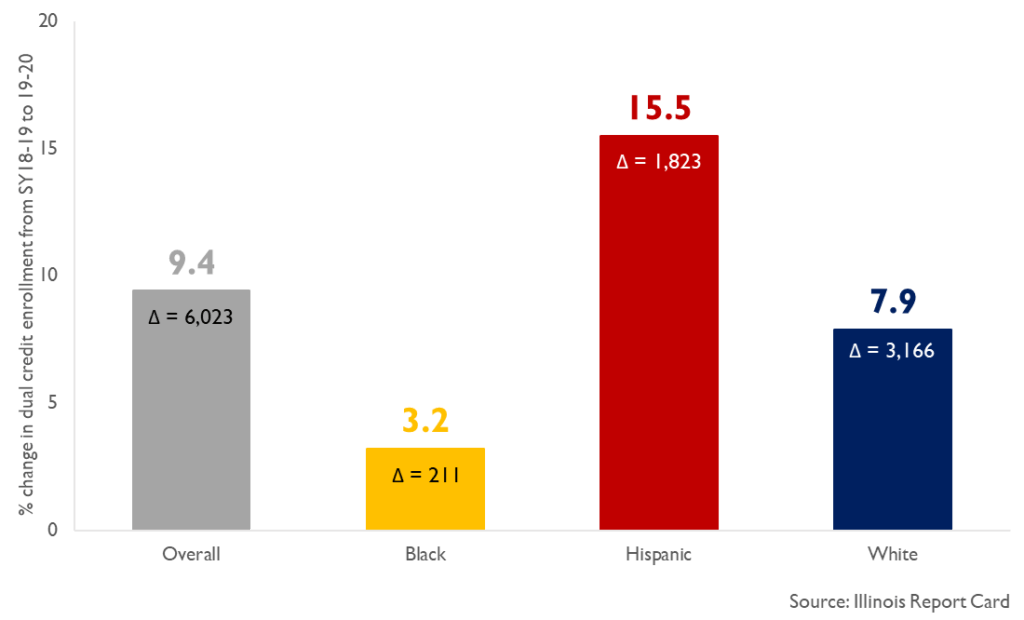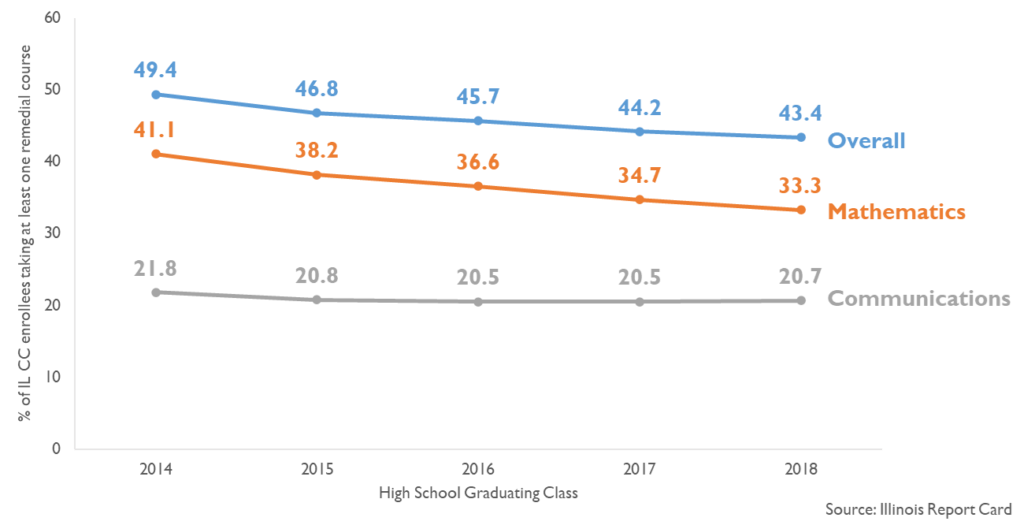As part of our core areas of Data Impact and Leadership, we see data as a valuable tool for work both locally and statewide, providing a window into how students are faring under the current policy and programmatic context. The Illinois State Board of Education recently released the school year 2019–20 version of the Illinois Report Card, the official source for data and information describing K–12 public schools in communities statewide. Below we describe several key metrics in college and career readiness, particularly where there is cause for celebration. Ultimately, student readiness for postsecondary appears to be rising overall across the state—dual credit enrollment is rising, remediation rates are falling, and graduation rates are growing. Viewed through an equity lens, there have also been substantial increases for Hispanic students in both dual credit and graduation rates, and Black students also made notable gains in their graduation rates.
While the progress described below is a cause for celebration, we also acknowledge that these are lagging indicators that do not yet reflect the full impact of COVID-19 and related disruptions that we would anticipate. As a result of the rapid shifts in delivering education because of the pandemic, as well as the overlapping racial unrest and uprisings following the murders of numerous Black individuals, issues of racial equity and structural racism have emerged as a major priority across our nation and for our team. We must all develop a better understanding of those impacts using both disaggregated data and engagement with community stakeholders. Informed through this engagement, we must promote the deepening and scaling of policies that further equitable postsecondary readiness and close racial opportunity gaps.

Dual Credit Enrollment Is Rising Statewide
The number of high school students enrolling in dual credit coursework rose year-over-year for school year 2019–20. A total of 69,995 students took at least one dual credit course, which is approximately 36.5% of the total number of students taking early college coursework (N = 191,848) of some kind (also including Advanced Placement and International Baccalaureate courses). That total compares to 63,972 students (approximately 34.1% of N = 187,719) in school year 2018–19.
Notably, dual credit enrollment among Hispanic students rose approximately 15.5% from school year 2018–19 (n = 11,760) to 2019–20 (n = 13,583). Enrollment increased year-over-year among White (~7.9%) and Black (~3.2%) students as well. We celebrate this steady progress and hope that more Illinois students are provided the opportunity to benefit from dual credit coursework in the future. Research demonstrates that dual credit students are more likely to earn a high school diploma, enroll in college, hold higher grade point averages, and complete a college degree on time. While Illinois has laid promising groundwork in the form of the Dual Credit Quality Act and associated frameworks, such as the Model Partnership Agreement for dual credit (which EdSystems helped develop), two recent reports have highlighted the importance and urgency of ensuring these policy frameworks are more comprehensively implemented across the state in ways that will drive equitable outcomes for students.

Overall Remediation and Remedial Mathematics Enrollments Continue to Decline
Remediation rates in community colleges continue to fall. Approximately 43.4% (n = 18,155) of graduates from the Class of 2018 who enrolled at an Illinois community college (n = 41,840) took at least one remedial course of any subject. This rate follows the downward trend in rates from the Classes of 2017 (44.2%, n = 17,405), 2016 (45.7%, n = 19,506), 2015 (46.8%, n = 19,388), and 2014 (49.4%, n = 20,894).
Reductions in remedial mathematics enrollment drive overall downward trends. Approximately 33.3% (n ≈ 13,933*) of community college enrollees from the Class of 2018 took a remedial math course. This percentage represents a drop of roughly 8 percentage points from the 41.1% enrollment rate for the Class of 2014 (n ≈ 17,367*). The five-year decline reflects both the implementation of transitional math under the Postsecondary and Workforce Readiness Act and of multiple measures placement policies at community colleges through the leadership of ICCB. As transitional math scales statewide through school year 2021–22 and all community colleges implement multiple measures policies, we should see even steeper declines in math remediation rates.
In contrast to the decline in remedial math enrollment, remedial English enrollment (reflected on the Illinois Report Card as remedial communications) remains stagnant. Approximately 20.7% (n ≈ 8,661*) of community college enrollees from the Class of 2018 took a remedial communications course. This rate is approximately the same as rates for the Classes of 2017 and 2016 and only a one-percentage-point improvement from the Class of 2014.
We anticipate a more substantial decline in remedial communications in the future when the statewide implementation of transitional English coursework takes hold. EdSystems worked with state agencies and secondary and postsecondary stakeholders to develop the course parameters and competencies for these courses, which state agencies are adopting in the coming months. EdSystems will continue to work with ISBE and ICCB to support the pilot implementation of transitional English coursework and associated policy adoption and portability approval processes. Unfortunately, none of the remediation data on the Illinois Report Card is disaggregated by demographic subgroup. This must be a priority for the state for the next iteration of the Illinois Report Card so that disparities in remedial enrollment rates among Black, Hispanic, and White students can be spotlighted and addressed.

Graduation Rate Reaches Five-Year High, With Substantial Increases Among Black and Hispanic Students
Unlike the stagnation evident in last year’s report, the overall four-year graduation rate rose to 88% for the Class of 2020—the highest rate in the past five years. It represents an increase of two percentage points over the Classes of 2019 (86%) and 2018 (86%). The pattern extends to racial/ethnic subgroups, with Black (77% to 80%) and Hispanic (82% to 86%) groups showing three- and four-percentage-point increases, respectively, from 2019 to 2020; these increases compared with a one-percentage-point rise among White students. We celebrate this narrowing of gaps across student groups and hope to see corresponding improvements further down the educational pipeline as well.
Data Source: Illinois Report Card
*Note: Calculated by EdSystems





